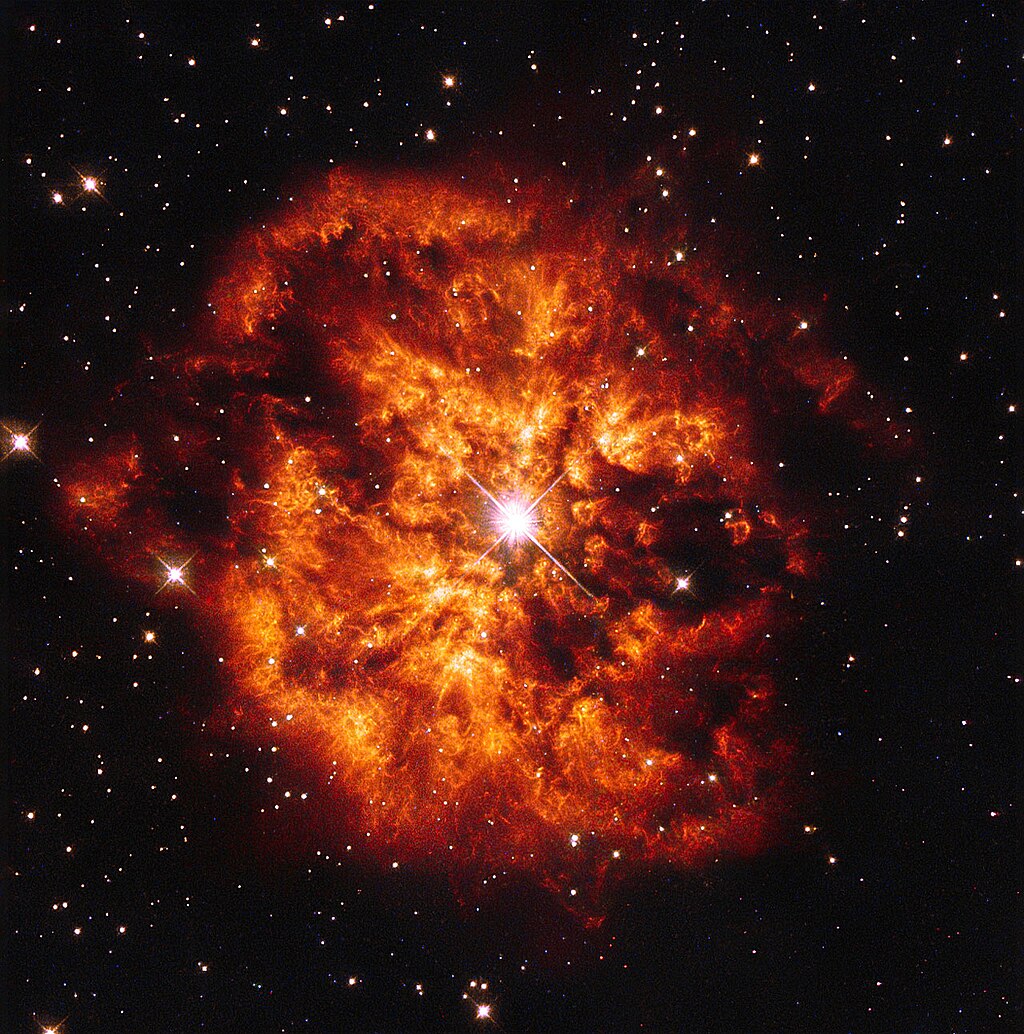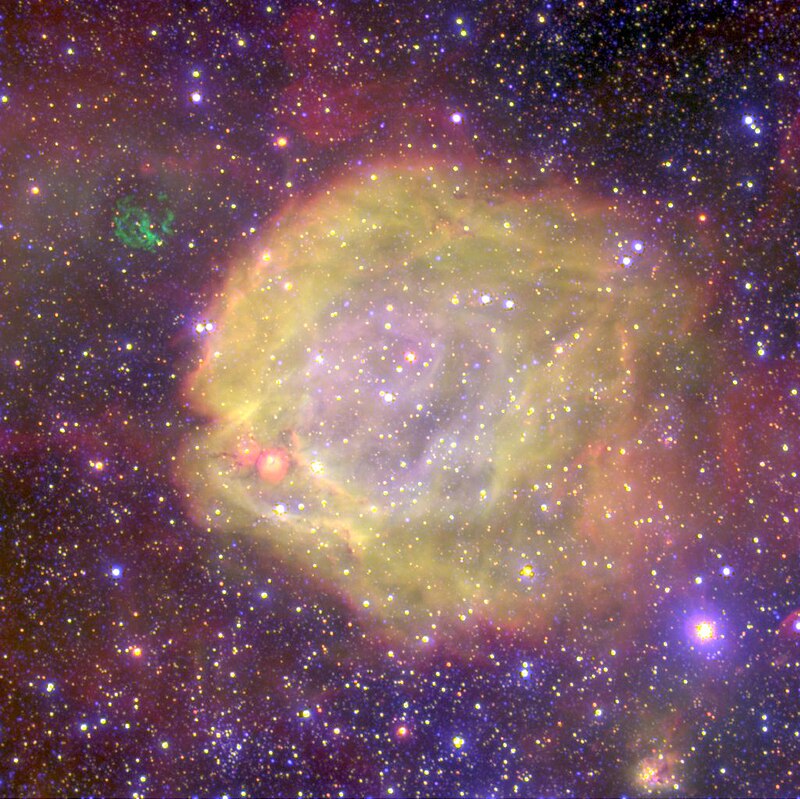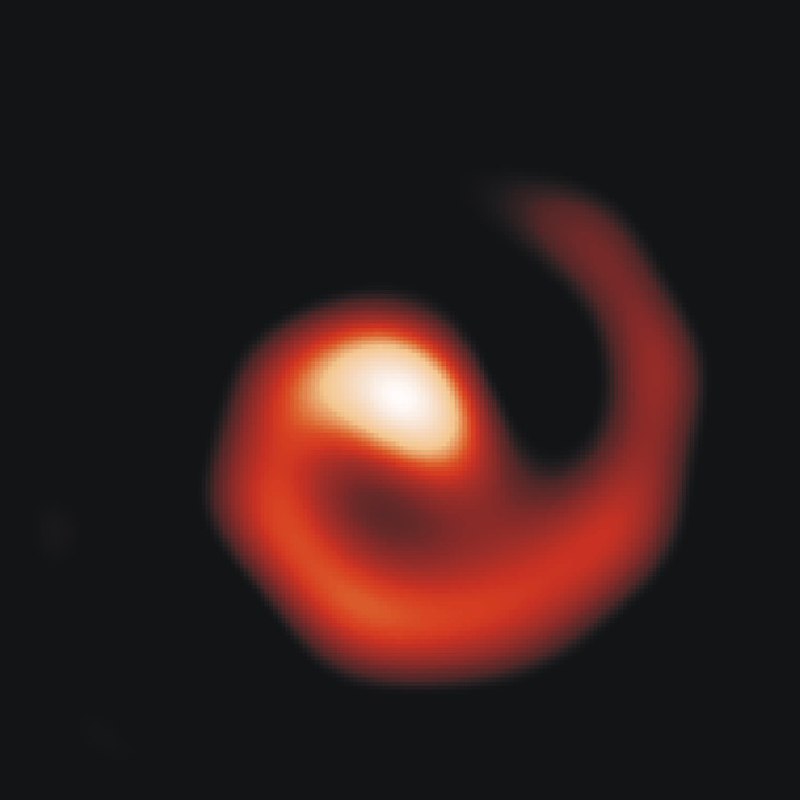https://en.wikipedia.org/wiki/WR_104 wrote:
<<WR 104 is a triple star system located about 7,500 light-years from Earth. The primary star is a Wolf–Rayet star, abbreviated as WR, with a B0.5 main sequence star in close orbit and another more distant fainter companion.
The WR star is surrounded by a distinctive spiral Wolf–Rayet nebula, often referred to as a pinwheel nebula. The rotational axis of the binary system, and likely of the two closest stars, is directed approximately towards Earth. Within the next few hundred thousand years, the Wolf–Rayet star is predicted to probably become a core-collapse-supernova with a small chance of producing a long duration gamma-ray burst.
The possibility of a supernova explosion from WR 104 having destructive consequence for life on Earth stirred interest in the mass media, and several popular science articles have been issued in the press since 2008. Some articles decide to reject the catastrophic scenario, while others leave it as an open question. Scientists currently believe the odds of WR 104 posing a risk to be small.
The Wolf–Rayet star that produces the characteristic emission line spectrum of WR 104 has a resolved companion and an unresolved spectroscopic companion, forming a triple system.
The spectroscopic pair consists of the Wolf–Rayet star and a B0.5 main sequence star. The WR star is visually 0.3 magnitudes fainter than the main sequence star, although the WR star is typically considered the primary, as it dominates the appearance of the spectrum and is more luminous. The two are in a nearly circular orbit separated by about 2 AU, which would be about one milli-arcsecond at the assumed distance. The two stars orbit every 241.5 days with a small inclination (i.e. nearly face-on).
The visually resolved companion is 1.5 magnitudes fainter than the combined spectroscopic pair and almost one arc-second away. It is thought to be physically associated, although orbital motion has not been observed. From the colour and brightness, it is expected to be a hot main sequence star.
The rotational axis of the binary system is directed approximately towards Earth at an estimated inclination of 0 to 16 degrees. This provides a fortunate viewing angle for observing the binary system and its dynamics.
WR 104 is surrounded by a distinctive dusty Wolf–Rayet nebula over 200 astronomical units in diameter formed by interaction between the stellar winds of the two stars as they rotate and orbit. The spiral appearance of the nebula has led to the name Pinwheel Nebula being used. The spiral structure of the nebula is composed of dust that would be prevented from forming by WR 104's intense radiation were it not for the star's companion. The region where the stellar wind from the two massive stars interacts compresses the material enough for the dust to form, and the rotation of the system causes the spiral-shaped pattern. The round appearance of the spiral leads to the conclusion that the system is seen almost pole on, and an almost circular orbital period of 220 days had been assumed from the pinwheel outflow pattern.
WR 104 shows frequent eclipse events as well as other irregular variations in brightness. The undisturbed apparent magnitude is around 12.7, but the star is rarely at that level. The eclipses are believed to be caused by dust formed from expelled material, not by the companion star.>>
 NGC 5189: An Unusually Complex Planetary Nebula
NGC 5189: An Unusually Complex Planetary Nebula







